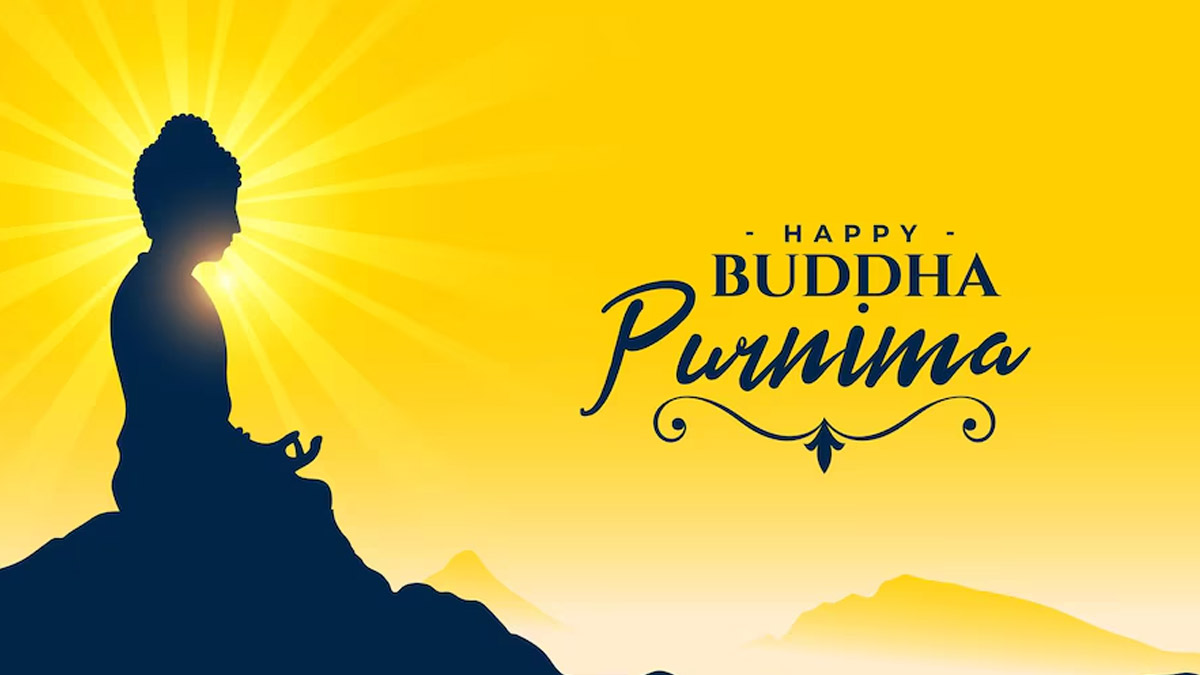Buddha Purnima, or Buddha Jayanti or Vesak, is an annual celebration observed on the first full moon of the Hindu calendar month Vaishakha
 KRC TIMES Desk
KRC TIMES Desk

Ajay Bhagat
The public holiday for Buddha Purnima in India was initiated by Dr. B.R. Ambedkar when he was the minister of law and justice. It is celebrated especially in Sikkim, Ladakh, Arunachal Pradesh, Bodh Gaya, Lahaul and Sipti district, Kinnaur, various parts of North Bengal such as Kalimpong, Darjeeling, and Kurseong, and Maharashtra (where 77% of total Indian Buddhist live), as well as other parts of India as per Indian calendar. Buddhists go to common Viharas to observe a rather longer-than-usual, full-length Buddhist sutra, akin to a service.
In the followers of Theravada style, the dress code is pure white, while others do not follow a particular dress code. Kheer, sweet rice porridge is commonly served to recall the story of Sujata, a maiden who, in Gautama Buddha’s life, offered the Buddha a bowl of milk porridge. Informally called “Buddha’s Birthday,” it actually commemorates the birth, enlightenment (nirvana), and death (Parinirvna) of Gautama Buddha in the Theravada tradition.
At the Mahabodhi Temple of Bodh Gaya in India, Buddha Purnima is celebrated with great enthusiasm. This temple is decorated with colored decorations. At the Bodhi Tree, under which Gautama Buddha obtained enlightenment, devotees of Gautama Buddha do special prayers. At the National Museum in Delhi, Lord Buddha’s holy remains are open for public viewing.
Buddha Purnima, or Buddha Jayanti or Vesak, is an annual celebration observed on the first full moon of the Hindu calendar month Vaishakha. This significant day commemorates the birth of Lord Gautam Buddha, who was born as Prince Siddhartha Gautam in Lumbini, present-day Nepal, around 563 BC. Buddhists worldwide celebrate Buddha Purnima with great fervour. According to Buddhist sources, Siddhartha had been meditating under a tree near the Ganges River when he had a spiritual epiphany (breakthrough). This epiphany revealed to him truths about the universe. He called these the “Four Noble Truths”:
- life is suffering
- suffering comes from desire
- one must limit desire to limit suffering
- To limit suffering, one must follow the “Eightfold Path”.
Four truths? Eight paths? This is starting to sound like math. Don’t worry. Math is suffering. This is not math. Here’s a primary source to prove it. The Pali Canon, an early text of Buddha’s teachings, describes the Eightfold Path like this:
And what is that ancient path, that ancient road? It is just this Noble Eightfold Path: that is, [1] right view, [2] right intention, [3] right speech, [4] right action, [5] right livelihood, [6] right effort, [7] right mindfulness, [8] right concentration. I followed that path and by doing so I have directly known aging-and-death, its origin, its cessation, and the way leading to its cessation [end]. I have directly known birth…existence… clinging… craving… feeling… contact…the six sense bases…name-and-form…consciousness…volitional formations [desires], their origin, their cessation, and the way leading to their cessation.
Buddhism teaches that by controlling desire and limiting suffering, this path could lead a person to spiritual enlightenment. But the road to enlightenment was not easy. The Eightfold Path required a great deal of self-sacrifice and dedication. The women and men who followed this path often adopted a monastic way of life, leaving behind worldly affairs and devoting their lives to attaining spiritual enlightenment. This usually meant becoming monks or nuns and taking vows of celibacy and poverty, meditating, and abstaining from violence.
From one Buddha to many Buddhisms
Though Buddhist beliefs originated in India, they spread quickly. Buddhism moved through trade networks, travelling on Silk Road caravans through Central Asia to China and aboard merchant ships to Southeast Asia. Buddhism also got some help from powerful leaders. Emperor Ashoka, who ruled the Mauryan Empire in India from 268 to 232 BCE, used his power and conquests to spread Buddhism through India and beyond. He sent missionaries from his empire into the surrounding regions, including Central Asia, Southeast Asia and Sri Lanka.
A big part of Buddhism’s success outside India was its ability to accommodate local beliefs. As it spread, Buddhism changed, blending with elements of different belief systems, a process known as “syncretism.” For example, Buddhist ideas blended with Confucian and Daoist beliefs in China, where concepts like ancestor veneration (honor) and filial piety (honoring elders ) became part of Buddhism. Another example is Greco-Buddhism. Descendants of Alexander the Great’s empire still lived in Central Asia, and when they converted to Buddhism, they blended it with elements of Greek culture. In some places, the Buddha came to be regarded as a deity, and new Buddhas were added to the pantheon, though these were not part of the original belief system.
After reaching China, Buddhism began to expand during the third century CE. An age of political upheaval followed the collapse of the Han Dynasty in 220 CE. This collapse of political authority meant many people sought meaning in new kinds of communities. For many, Buddhism offered a fresh start as the old order collapsed. Chinese rulers began using Buddhism to unite their people. From China, Buddhism spread to Korea and Japan. There too, Buddhism blended with local practices. Buddhist monks in Japan even became caretakers for Shinto shrines and participated in Shinto rituals.
Why did Buddhism spread around the world?
First, it offered a Universalist message: that every individual could attain enlightenment by following its teachings. This message appealed to those, like women and peasants, who were marginalized in society. Second, Buddhism was a missionary and had several powerful political supporters. Buddhists believed that their message could and should be spread to everyone and anyone. Emperor Ashoka was the first ruler to encourage Buddhist missionaries to travel abroad, and later Chinese rulers sought to spread Buddhism as a way to build their own power and influence. Finally, Buddhism was a flexible belief system, capable of adapting and changing to fit very different places and people.
Though it is one of the largest belief systems in the world, with about 500 million followers today, Buddhism is not singular. It has taken on many forms in many places. From northern India, where it originated, Buddhism travelled along trade networks to Central Asia, China, Korea, Japan, and beyond. And though it originated and spread in India, Buddhism gradually became less popular there. In countries like Sri Lanka, Thailand, Myanmar, and Cambodia, Buddhism is today the dominant belief system. Wherever it went, Buddhism changed how communities were organized. It challenged social hierarchy, created opportunities for women, and gave individuals of all classes a role in spiritual practice. But as Buddhism changed with each new society it touched, so too did Buddhism change. Indeed, it was Buddhism’s ability to adapt to new contexts that allowed it to spread so far.
(The author is an Assistant Engineer JKPDD)
Promotional | Connect with KRC Foundation



